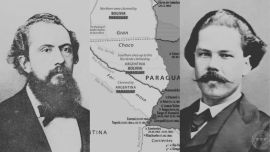After the hard blow that Argentina’s hotel industry suffered during the first 24 months of the Covid-19 pandemic, 2022 ended with a resounding turnaround.
According to a new report by the capital’s Entur tourism body, “last year ended with very positive signs for the hotel industry, with more domestic tourists than in 2019 and an average [room] occupancy rate of 60 percent,” rising to “peaks of over 90 percent” – the highest figure from the last decade. In economic terms, the contribution was significant as the industry had a turnover of almost US$1.8 billion for the year.
The report, issued by the Ente de Turismo de Buenos Aires (“Buenos Aires Tourism Board”), states that when it comes to tourism, the city is “on the road to recovery.” According to Lucas Delfino, the body’s president, average occupancy last year was 60 percent, surpassing the historical records of 2017, 2018 (which reached 59 percent) and the last figure recorded in the pre-pandemic period (58 percent in 2019). Underlining the rise in locals travelling to the capital, 2.4 million domestic tourists stayed in hotels in Buenos Aires City, 60,000 more than in 2019.
"We consider national tourism to be a pillar of our public policies. Last year we managed to have a large number of tourists from all over the country,” Delfino told Perfil in an interview. “In 2023 we want to further deepen the different activities that the destinations are doing, in order to increase the current numbers. We hope to end 2023 with an even higher number of national passengers in local hotels.”
Officials in the City government told this newspaper that in order to consolidate this year’s growth, the body will seek to "extend regulations to include incentives for the construction of new hotels that incorporate spaces designed for so-called "business tourism" purposes, a segment in which Buenos Aires is currently among the most competitive cities in the world.
A look at the peak times for hotel occupancy rates shows that two of the top three coincided with music concerts. Top of the list was the string of 10 concerts offered by British rockers Coldplay at River Plate’s Monumental stadium, when it “touched” 92 percent, says Entur. The podium was completed by the Easter holiday season, when occupancy rates reached 91 percent and the massive thee-day Lollapalooza music festival, at 82 percent.
Over the past year, Buenos Aires has seen a resuscitation of a good part of the tourism sector, which was plagued by the closures of the pandemic isolation: 80 percent of available hotel rooms were recovered and reopened before 2020. Today, according to Entur records, the city has almost 53,000 beds available. The companies that were best positioned to weather the storm of the pandemic were the capital’s top five-star hotels, with a 100 percent recovery rate in available beds. Four-star establishments recovered 94 percent of beds, with three-star hotels at 89 percent availability.
Economically, the hotel business generated around US$1.8 billion for the city's economy, with an important impact on related sectors, mainly in gastronomy, transport and culture. The "average" expenditure of national tourists during their stay in the city was US$124 for nationals and US$776 for international travellers.
According to data compiled by the Observatorio del Entre de Turismo, employment in the "hotel industry" has also witnessed a gradual recovery. Currently, there are 148,000 people employed in the tourism sector in general, while, specifically in the "hotel" sector, private employment figures hit almost 15,000 people.
Florencia Busilachi, Entur's chief-of-staff, told Perfil that "within the tourism sector, the hotel industry is an important source of employment.” She said that while the recovery was a success, there is still a chance for more growth in the near future.
In Entur’s report, data for domestic tourists shows that 33 percent were tourists from Buenos Aires Province, followed by the coastal region with 22 percent, Patagonia with 14 percent, the province of Córdoba with 12 percent, the north with 10 percent and finally the Cuyo region with nine percent.
"To continue growing," concluded Delfino, "we need to have an attractive tourist offering and a policy of air connectivity that expands frequencies. This way, Buenos Aires will continue to record significant hotel growth in the coming years."























Comments